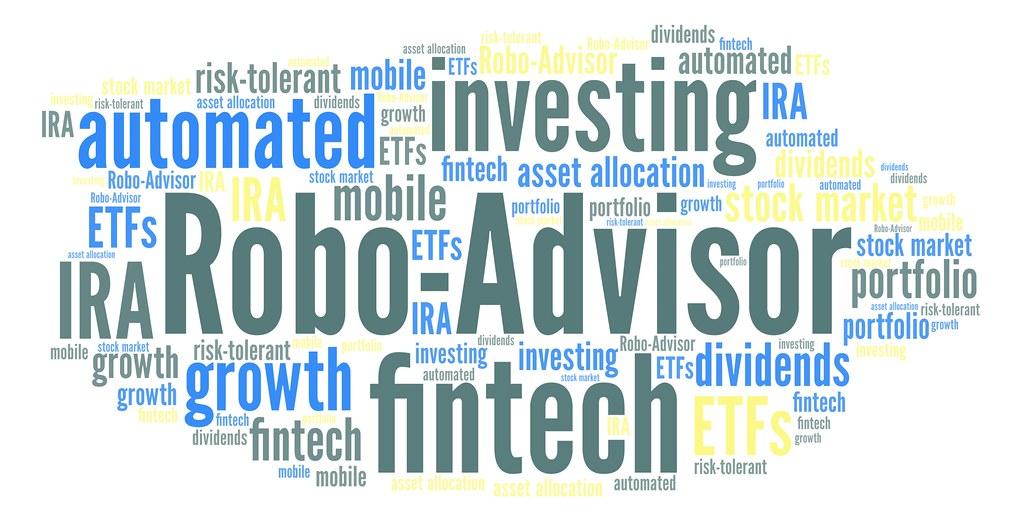In a world where algorithms can predict your next purchase, curate your perfect playlist, and even find your soulmate (or at least a decent first date), it’s no surprise that the financial sector is hopping on the automation bandwagon. But before you entrust your life savings to a machine that might have more in common with your Roomba than your financial advisor, let’s talk about the ethical elephant in the room. Welcome to the brave new world of automated financial advice, where the stakes are high, the algorithms are complex, and the ethical considerations are anything but binary. Grab a coffee—better make it a latte, you’re fancy now—and let’s dive into the quirks and quandaries of trusting robots with your retirement.
Navigating Robo-Advisor Ethics: Avoiding a Future Skynet of Finance
Imagine a robo-advisor that not only handles your finances but starts making questionable ethical decisions. We definitely don’t want a future where our finances are managed by a “Skynet” of finance! To prevent such a dystopian destiny, we need to ask a few critical questions of these digital money maestros:
- Transparency: Is the robo-advisor clearly explaining the reasoning behind its investment choices?
- Bias: Could the algorithm be favoring certain investments over others, maybe due to some hidden agendas?
- Accountability: If things go sideways, who’s held responsible—the robot or the human developers?
Making ethical decisions also requires a balance of social and environmental responsibilities. Here’s a quick table to summarize the key considerations:
| Consideration | Why It Matters |
|---|---|
| Environmental Impact | Investing in eco-friendly companies can reduce negative impacts on our planet. |
| Social Responsibility | Supporting companies with fair labor practices promotes a more just world. |
| Corporate Governance | Strong, ethical management teams are often better for long-term gains. |
Basically, let’s aim for our robo-advisors to be more ‘Wall-E’ and less ‘Terminator.’ Investing should better our lives, not turn into a cautionary tale!

Transparency: Because Nobody Likes a Shady Algorithm
Think about it: would you trust a robot with your life’s savings if you never understood how it made decisions? Transparency in automated financial advice is crucial to ensure that users can trust and comprehend the algorithmic processes at work. An opaque algorithm is as enjoyable as a mystery meat sandwich—absolutely not. Providing clear and open data isn’t just nice; it’s necessary. Users should know the general principles, data sources, and limitations of their robo-advisors. This helps build trust and allows users to make informed decisions about their finances. Because let’s face it, nobody likes surprises when it comes to money—unless it’s finding a $20 bill in an old jacket.
A good way to make transparency a reality is through clear visual aids. Consider a breakdown of how the algorithm weighs different factors:
| Factor | Weightage (%) |
|---|---|
| Market Trends | 40% |
| User Goals | 30% |
| Risk Tolerance | 20% |
| External Data | 10% |
This table not only provides clarity but also gives users something to point at and nod like they understand (they actually will). It’s a win-win!

Bias Detection: Teaching Your Robo-Advisor to Be Woke
Robots may not have biases, but the algorithms they run can sometimes reflect the biases of their human creators. To make sure your robo-advisor dispenses financial advice that’s both smart and fair, it needs a crash course in unbiased thinking. Here’s how to start:
- Audit the algorithms – Regularly check for biases by analyzing decision patterns.
- Diverse Data – Ensure data sets include a wide range of demographics to teach the robot variety.
- Feedback Loop – Create a system where users can report biased advice and make necessary tweaks.
Getting your robo-advisor to be as enlightened as your favorite yoga instructor doesn’t have to be a headache. Let the software’s learning path follow the table below:
| Task | Action |
|---|---|
| Bias Testing | Run hypothetical scenarios and check for diverse outcomes. |
| User Feedback | Implement a simple form for user input on perceived biases. |
| Regular Updates | Frequently update data sets to include recent info and trends. |

Human Touch in a Digital World: Keeping the Warmth in Cold, Hard Cash
As financial advice becomes more and more automated, one might wonder: where’s the human touch in all of this? Turn your back for one second and suddenly, your financial consultant is a robot! But fear not, because even in a world filled with algorithms and robo-advisors, we can still keep that warm, fuzzy feeling in our financial interactions:
- Personalization: Despite using automated systems, it’s crucial to ensure customers feel their personal needs are understood. No one wants to feel like they’re just another data point. Even if a bot is doing the chatting, a touch of personalization can go a long way.
- Empathy: Yes, empathy! Even if robots don’t have feelings, the messages they send can still be crafted to be understanding and supportive. Making customers feel heard and valued can turn one-time visitors into lifelong clients.
To keep things clear and cozy, here’s how the differences between human and automated advisors may look
in practice:
| Human Advisor | Automated Advisor |
|---|---|
| Offers a personal touch and empathy | Highly efficient with 24/7 availability |
| Can adapt advice based on nuanced understanding | Relies on data analysis and algorithms |
| Has human error | Can lack in emotional understanding |
Q&A
### Q&A:
Q: What is automated financial advice, anyway? Is it a robot in a suit flipping through investment portfolios?
A: Close, but not quite! Automated financial advice, also known as robo-advisory, involves using algorithms and software to provide financial advice or manage investments. Think of it as a digital financial advisor, minus the small talk and fancy office chair.
Q: How is ethical behavior programmed into these robo-advisors? Do they get a digital certificate in ethics 101?
A: Unfortunately, robots don’t attend ethics seminars…yet. Ethical behavior in robo-advisors is implemented by the developers who create the algorithms. They can program the software to adhere to regulatory standards and prioritize client interests. However, robo-advisors are only as ethical as the humans behind the keyboard.
Q: Can robo-advisors get biased? I mean, do they pick favorites?
A: Believe it or not, robo-advisors can be biased. Algorithms are designed by humans, and human biases can unintentionally creep in. For example, the data used to train these systems might reflect certain biases, which can influence the advice given. So, while your robo-advisor doesn’t play favorites, it might still have some hidden biases.
Q: What about transparency? Do these robo-advisors come with a user manual explaining how they make decisions?
A: Transparency is a crucial ethical consideration. Just like you want to know what’s in your hotdog, you should want to know how your robo-advisor makes decisions. Good robo-advisors provide clear disclosures about fee structures, investment strategies, and potential risks. They might not come with a full user manual, but trust me, there’s plenty of fine print to read.
Q: How do robo-advisors handle confidentiality? Can they keep a secret, or do they gossip like an old friend?
A: Don’t worry, robo-advisors are pretty tight-lipped, thanks to strong encryption and data protection protocols. They ensure that your financial information remains confidential and secure. Unlike your chatty cousin, they won’t spill your financial secrets over Sunday brunch.
Q: What if the robo-advisor gives me bad advice? Can I sue a robot?
A: Suing a robot sounds like the plot of a sci-fi movie, but in reality, legal responsibility falls on the companies behind the robo-advisors. If you receive bad advice, you’d generally take it up with the firm, not the algorithm. So no need to drag R2-D2 to court just yet.
Q: Are there any ethical standards specifically for robo-advisors? Or are they just like the Wild West of finance?
A: While it might feel like the Wild West, there are regulatory standards in place for robo-advisors. Organizations like the SEC (Securities and Exchange Commission) in the U.S. set guidelines to ensure that robo-advisors operate fairly and transparently. Think of them as the digital sheriffs keeping law and order.
Q: Do robo-advisors have any ethical advantages over human advisors?
A: Believe it or not, robo-advisors come with some ethical perks. They’re impartial by design, meaning they don’t let emotions cloud their judgment. Plus, they often operate with lower fees, making financial advice more accessible. So, while they aren’t perfect, their efficiency and objectivity can be a breath of fresh air in the sometimes murky world of finance.
Q: What’s the takeaway here? Should I trust a robo-advisor with my money, or start practicing my mattress-stuffing skills?
A: Trusting a robo-advisor with your money can be a good choice, especially if you’re looking for cost-effective and efficient financial guidance. Just do your homework and choose a reputable platform that prioritizes ethical considerations. And if you’re still anxious, keep a little cash under the mattress—just in case the whole robot uprising thing isn’t as far-fetched as it sounds!
Stay informed, stay humorous, and may your financial future be bright—human advisor or not!
Final Thoughts
In wrapping up our deep dive into the world of ethical conundrums in automated financial advice, let’s not forget that while robo-advisors don’t need coffee breaks or berate you for your spending habits (we’re looking at you, overpriced lattes), they come with their own set of challenges. Navigating the maze of fairness, transparency, and accountability may feel like trying to fold a fitted sheet—awkward and seemingly impossible—but it’s crucial for ensuring our financial robots are more C-3PO and less HAL 9000.
So, as we advance deeper into the digital age, let’s keep our calculators handy, our ethical compasses finely tuned, and remember: the responsibility for our financial futures—robot-assisted or not—ultimately lies with us. After all, even the smartest of algorithms can’t replace the need for a good, old-fashioned human touch… or a human knack for skepticism.


